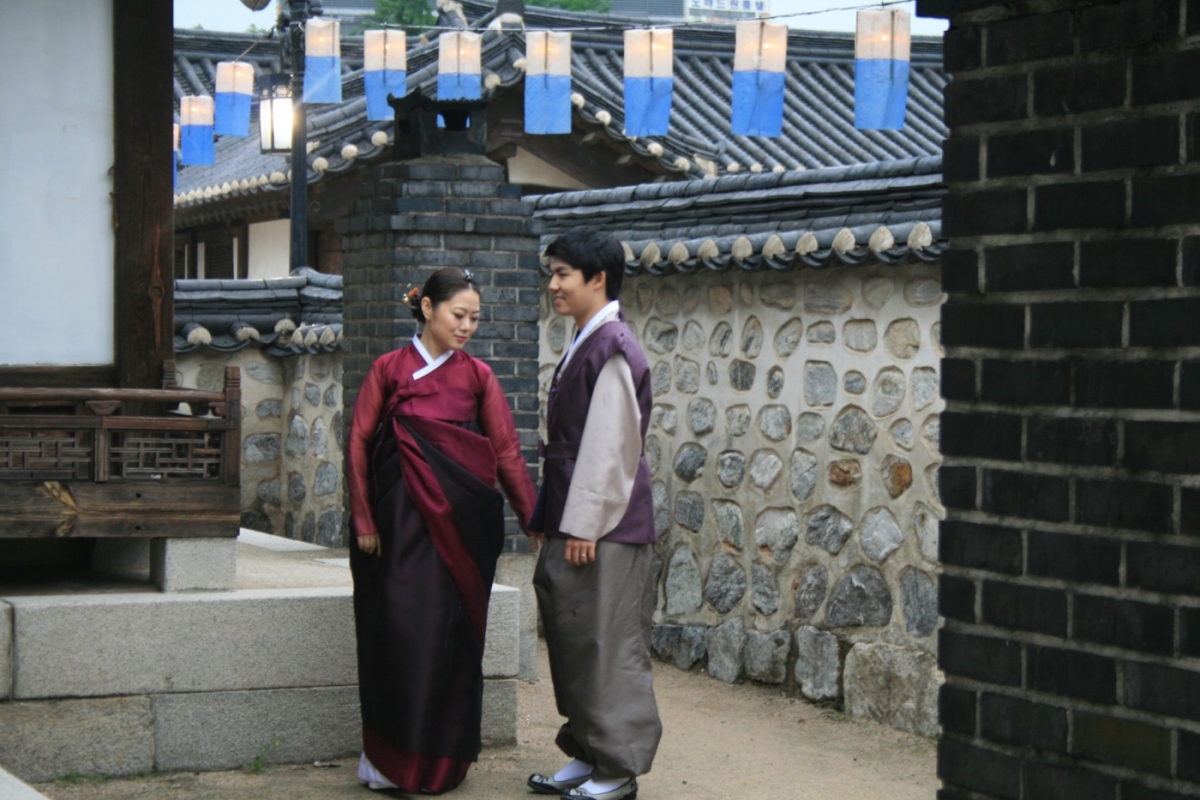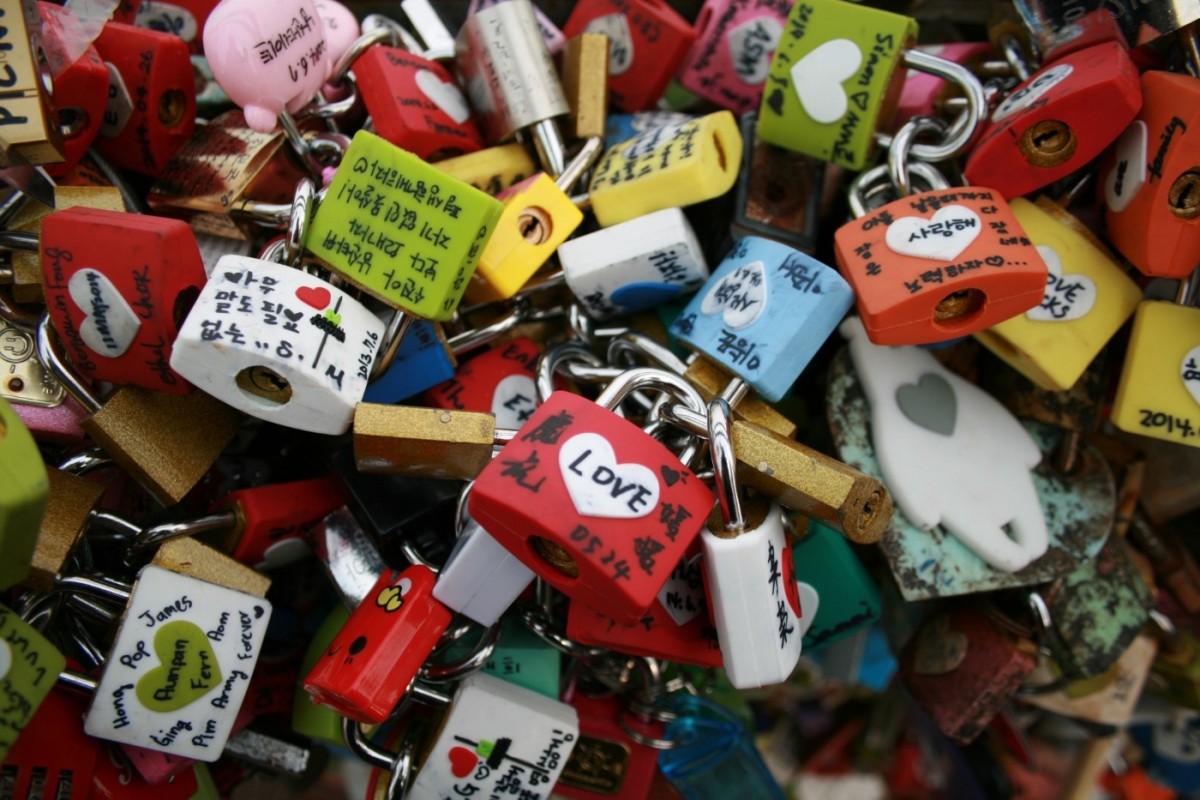∞Originally published in the Vancouver Sun March 7, 2015∞
It took only a few steps into the cavernous Seoul Noryangjin Wholesale Fisheries Market to realize I was woefully unprepared for a visit: a few very squishy, sea-brined steps in sandals quickly covered in sea cucumber slime and squid residue sloshed from vendors’ buckets. But the spectacle of endless aisles stacked with glistening and squirming bait — from giant geoduck to skates the size of kites — was worth the wet feet.
It was a messy introduction to this Asian mega-city’s attractions, but an apt one. The city’s massive fish market — 700 stalls open 24 hours selling more than 830 types of seafood — is the perfect embodiment of what, to a foreigner, seem the two dominant poles of Korean culture: a steadfast love of both round- the-clock shopping and round- the-clock eating. Both these key attractions — jam-packed shop- ping districts open late into the night and vast menus chocked with impossible-to-identify Korean delicacies — can be over- whelming to the uninitiated.
But Seoul’s contrasts, including the juxtaposition of modern and ancient cultures within its urban core, are part of what makes this city of more than 10 million fascinating to visit.
On the one hand, Seoul is home to stunning 13th-century palaces with traditional gardens and neighbourhoods of well-pre- served wooden hanok houses offering ancient tea services and hanjeongsik (traditional Korean food). On the other, this ultra-modern highrise haven is ground-zero for bleeding-edge high-tech, fast fashion, and the K-pop phenomenon which has gone global Gangam-busters. As a result, in most areas, it’s now much easier to find a McMatcha than a simple cup of green tea.
The best way to take it all in is to take a sip of each side of the city, starting with its classical beginnings.
Seoul’s four main traditional palaces, refurbished and restored, preserve a sense of what came before. Start at the sprawling Changdeokgung Pal- ace, a UNESCO World Heritage site constructed in 1405 in the Joseon Dynasty. It was later destroyed by the Japanese and reconstructed in 1610, serving as a royal palace for 270 years. The grand architecture is impressive, but the real jewel is its secret garden. Be sure to sign up for a peaceful forest walk amid serene pavilions and ponds.
Gyeongbokgung Palace to the west is the larger of the two palaces, featuring the grand Gwanghwamun Gate, changing of the guard ceremonies, and the National Palace Museum, home to Joseon-era art, instruments and weapons. The palace was originally built in 1395, but destroyed and reconstructed sev- eral times, most recently in the 1990s. It’s a major tourist draw, but you can still find quiet corners to drink tea in a dabang café or watch Korean couples pose in hanbok (traditional Korean dress) for engagement photos.
For more royal watching, visit Jongmyo’s spirit shrines and Jogye-sa’s Daeungjeon Temple, which offers a Saturday temple life tour complete with lantern-making, meditation, tea ceremony and Buddhist meal.
In contrast to the grand palaces, Bukchon Hanok Village, nestled between the two largest palace estates, is a neigh- bourhood average Koreans call home. This charming quarter is home to 900 hanoks, many dating back to the 1930s. Some have converted to galleries, tea houses, even soju (Korean rice liquor) distilleries, providing ideal stops on a walking tour. Stop in and sit cross-legged on the floor for pots of fine green tea and steamed pumpkin cakes at the charming Cha Masineun Tteul, or visit the Bukchon Traditional Crafts Experience Centre to try your hand at fan-painting and silkscreening. You can also arrange to stay at a hanok guest house, or simply peek inside the private Simsimheon residence, revelling in the intricate wooden architecture while sipping cold plum tea in its courtyard.
Those looking to explore Korea’s ancestral arts and clas- sical cuisine can do both with an evening at Korea House, which offers an hour-long show of Korean music and dance — the acrobatic ogu-mu female drummers are spectacular — and artistic royal court cuisine — an endless succession of delicate courses and banchan side dishes — served to the strains of a gayageum (Korean zither). Groups can arrange additional activities, from kimchee cooking classes to jang-gu drumming workshops.
After dinner wander through Namsangol Hanok Village down the street, where five Joseon-era yangbang (houses for the gentry) have been relocated on a land- scaped property. The village also offers tea services, martial arts demonstrations, and concerts.
Then, leaving the peaceful past behind, dive in to Seoul’s hectic modern-day pace with a dizzying ride up to Namasan Peak via cable car. The city park and N Seoul Tower on the mountaintop offer panoramas of the city skyline, plus a window into its heart — where, hundreds of young lovers have left locks carved with initials fastened to fences.
Afterwards, hop a metro to the centre of Seoul youth culture in Hongdae district, centered around Hongik University. This commercial area of narrow streets is decorated with funky graffiti and odd public art and chocked with trendy clothing shops and quirky restaurants. Stop for an off-the-beaten path bite: tacos and tapas with a Korean twist are all the rage here, and you’ll find more than one cat and dog café. Saturday afternoons, explore the charming HongdaeAp Freemarket where artisans sell handcrafted jewelry, toys and art. After dark, dozens of K-pop-pumping dance clubs, live indie music venues, and karaoke noraebangs turn the neighbourhood into a street party.
Bookend your trip with a night spent in downtown’s premier pedestrian shopping precinct, Myeong-dong. This neon- branded labyrinth comes alive evenings, as consumers flock to shop, show off, and sample from street food vendors — must-tries are tteokbokki, rice cake tubes wok-fried in a spicy sauce and bindaetteok, hot mung bean pancakes. Or sit for a spell at one of Myeong-dong’s many restaurants specializing in Korean bar- becue, then follow your bulgogi or galbi with a shaved-ice bingsu dessert.
Head north to walk it off with a stroll along Seoul’s urban waterway, the man-made, 5-plus kilometre Cheong-gye-cheon. The river’s lit prettily in the evenings and is a favourite with promenading couples. Follow it far enough and by now it should come as no surprise to find the stream ends in the east near yet another after-dark street food market, Gwangjang, and a sprawling fashion-driven night shopping district, Dongdaemun, where some malls stay open until 5 a.m.
If you can keep up with the Koreans, shopping and snacking until dawn, why not head back to Noryangjin to catch the early-morning fish auctions? Just remember your rubber boots.
If you go:
- Cathay Pacific (1-800-268-6868) flies to Seoul through Hong Kong
- Air Canada (1-888-247-2262) flies to Seoul through Tokyo
- Korean Air (1-800-438-5000) flies direct to Seoul from Vancouver
- Visit the South Korea Tourism Board for more.
Travel funding was provided by the Asia Pacific Foundation of Canada’s Media Fellowship Program, supported in part by Cathay Pacific Airways. This piece does not necessarily reflect the views of either organization.

I’m a different kind of travel writer. I craft long-form, cover-worthy feature-length travel articles with style and substance. I tell travellers not just what to do, but why. Find out how to work with me.




















